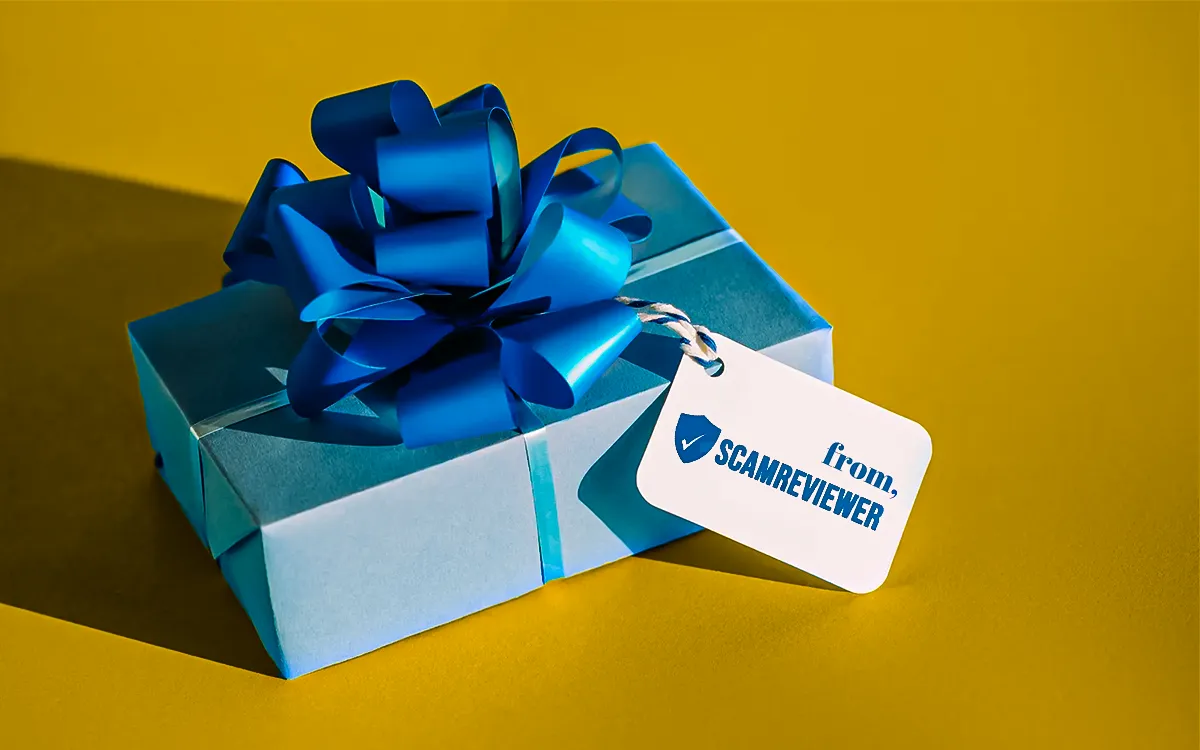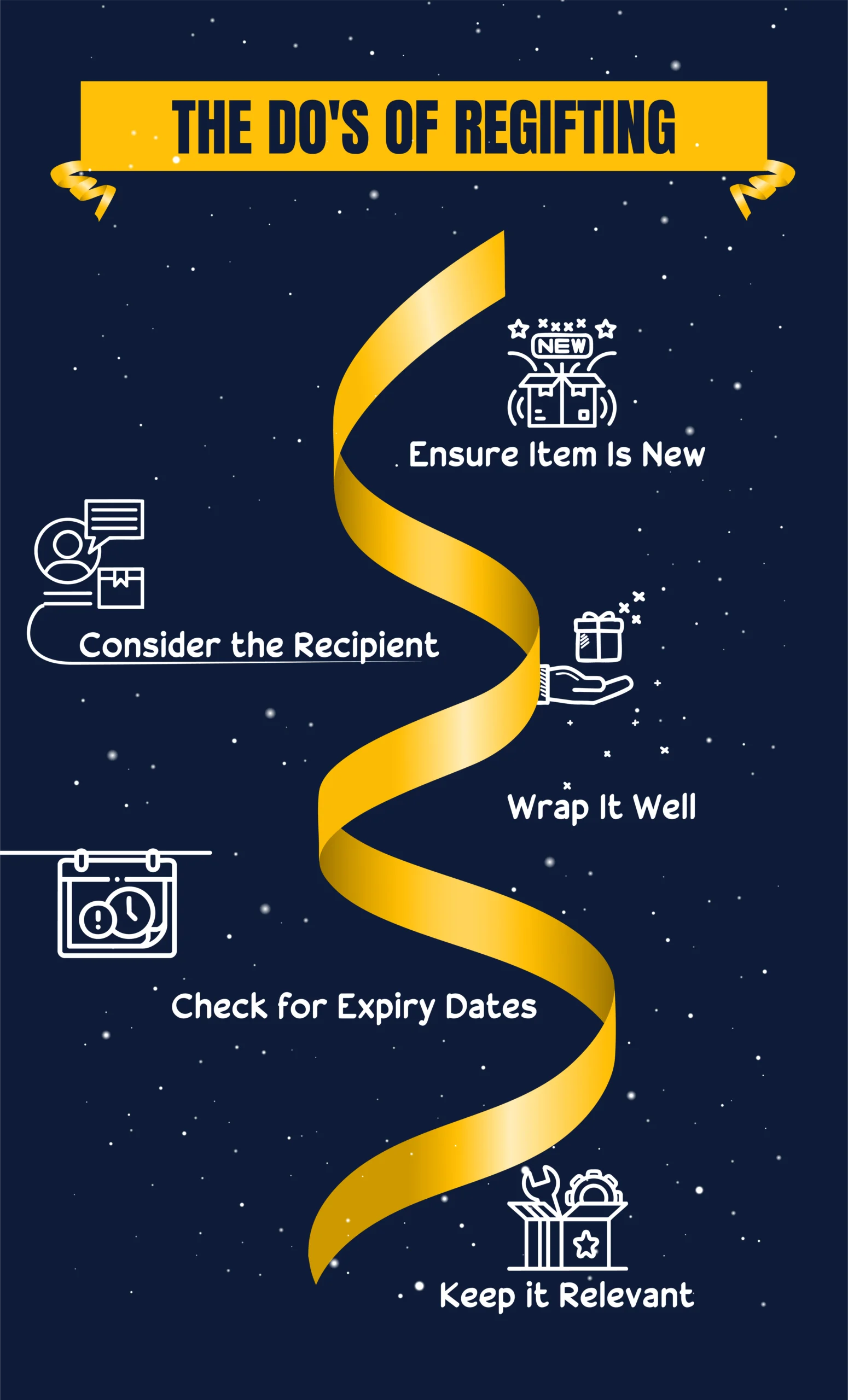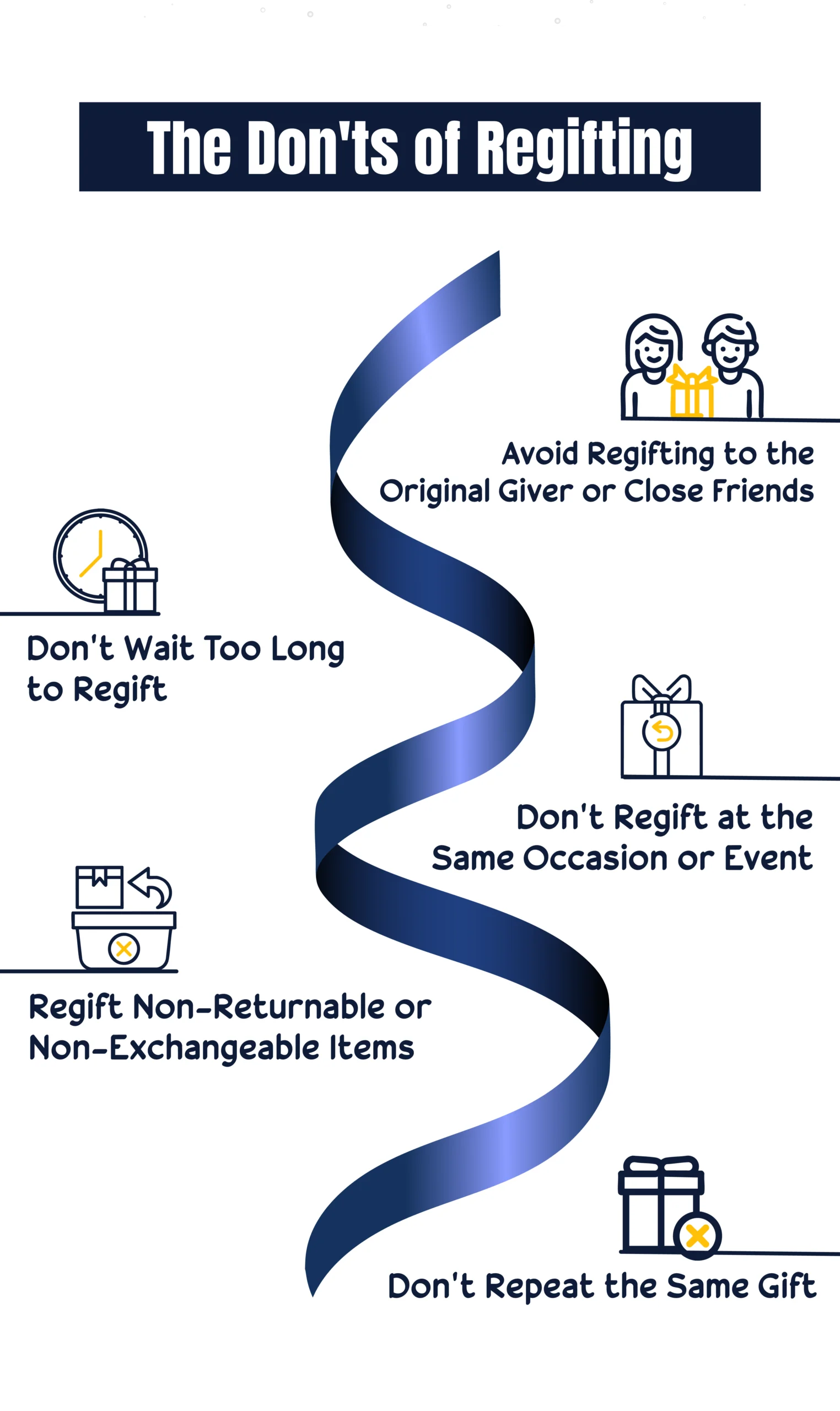How to Re-Gift the Right Way: The Do’s and Don’ts of Regifting

When we receive a gift that doesn’t meet our needs or preferences, whether it’s the wrong size, not our style, or simply something we won’t use, the natural question is: what should we do with it? The answer is simple: Regift it.
Regifting is a straightforward and efficient way to give away an item to someone else who will appreciate it. Still, regifting comes with a lot of anxiety about social norms or potentially offending the original gift giver. Regifting can be a thoughtful and practical option if done properly, but if done poorly, it can backfire.
In this article, we explore the idea of regifting; we learn proper regifting etiquette; we discuss how you can regift effectively so your guest can enjoy your gift, or at the very least, appreciate it.
Understanding the Concept of Regifting
Regifting is a trend that has been growing in popularity as a way of passing on unused or unwanted items to a prospective recipient. Regifting is giving whatever you’ve been given, a gift, a promotional product, or something else to another person. This can happen when a gift doesn’t suit your needs or desires, and you opt to pass it on to someone who could use it rather than hold onto it yourself.
So is it okay to regift? The response will vary depending on multiple factors, including the method of gifting and the new recipient’s relationship to the original giver of the gift. Although most people are questioning whether regifting is rude, it is important to note that regifting is only rude if someone does it carelessly or without thought.
In case you regift an item without paying attention to the preference of the receiver or fail to handle the item’s condition well, it will appear impersonal. But done with thought and in the proper situation, regifting can be considered a smart method of recycling a present and providing it with a second opportunity.
How to Regift the Right Way: Do’s of Regifting?

- Check if the Item Is Brand New or Unused: Regift only items that are in perfect shape. If the item has already been regifted or appears to be used, it may not be well received.
- Consider the Recipient: Think about your recipient; regifting isn’t just passing something on; it’s giving it to someone who will appreciate it. Be mindful of the recipient’s needs and wishes in your selection.
- Wrap It Well: Presentation matters. Even if the present has been returned, a good presentation shows you care. The returned gift will feel new.
- Check for Expiry Dates: Check the expiration date on the item if it is perishable or has a use-by date (this could be food, cosmetics, or subscription services). Regifting an item that is expired can create problems.
- Keep it Relevant: Consider whether the item is appropriate for the recipient’s lifestyle when considering regifting options. Ensure that it is appropriate for their interests and hobbies, whether you are regifting a book, a gift card, or other devices.
Regifting Etiquette: The Don’ts of Regifting

- Avoid Regifting to the Original Giver or Close Friends: Giving a regift back to the original giver or someone in the same social circle can lead to awkwardness and hurt feelings. Regifting within close social circles must be avoided to prevent this.
- Don’t Wait Too Long to Regift: Timing is everything, so don’t regift too quickly after receiving it. To regift, don’t wait too long after receiving the gift.
- Don’t Regift at the Same Occasion or Event: Avoid regifting an item at the same event or occasion where you originally received it. Others may notice and assume you’re simply passing along a gift without much thought or consideration.
- Regift Non-Returnable or Non-Exchangeable Items: Ensure the recipient can return or exchange easily any items they will receive. Regifting items without a receipt or from stores with poor return policies is not recommended.
- Don’t Repeat the Same Gift: If you keep repeating the same gift over and over, it will seem like you are recycling something that you no longer care about. Ensure the item is distinctive and does not give away that much if you intend to regift it.
How Regifting Can Save Money?
Regifting can be a practical and cost-effective way to handle items you no longer need while saving money. Here’s how:
- Instead of buying new gifts, regifting items you already have is a cost-effective option. It allows you to save money while still enjoying the act of giving during the holidays or birthdays.
- Regifting helps you make the most of items you already have, reducing waste and saving money. It’s a quick and easy way to be both financially smart and environmentally friendly.
- Regifting shines in informal gift-giving exchanges such as Secret Santa or white elephant parties when fun or quirky gifts are anticipated, but expensive gifts don’t matter.
Regifting Ideas for Everyone
When the occasion arises to regift something, it is essential to select items that are useful and suitable for the recipient and are in new, well-preserved condition. Here are some guidelines.
- Beautiful decorations, such as picture frames, candles, or brand-new appliances right out of the box, are easy to regift because they are typically neutral and will be appreciated by many recipients.
- Regifting is usually a nice idea, even if the clothes or accessories you receive don’t fit or match your style. To make it appear new to the recipient, remember to remove any tags and personal remarks.
- Headphones, smartwatches, and tech device accessories are examples of unused electronics that, if in good shape, might be excellent regifts.
- Unused gift cards that you won’t use can make the ideal regift, particularly if they are for popular retailers. Just make sure the card is from a trustworthy merchant and has a legitimate balance.
Regifting is a nice way of passing on things that you no longer use, but you should make sure the things that you purchase online are original. Always keep an eye out for online shopping scams that claim to have great offers but end up sending substandard products instead. Make sure the website is genuine and secure before you make any payments. Avoid shopping scams, which may end up leaving you with items you may not even get or that are poor quality to regift.
Conclusion
In conclusion, regifting can be a considerate and economical way to give away things you no longer need while also saving money. Those who receive your regift will be happy and appreciative if you follow the regifting protocol. Don’t regift to the original giver, pick well-maintained products, and take the recipient’s needs into account. Regifting, when done correctly, may reduce waste, save money, and even make giving gifts a little more environmentally friendly.
FAQs
What are the common regifting mistakes to avoid?
Common regifting mistakes include regifting used items, failing to remove personal notes, or passing the item back to the original giver.
Is it okay to regift a used or opened item?
It’s generally not okay to regift used or opened items, as it can come off as thoughtless and may not be in good condition for the recipient.
